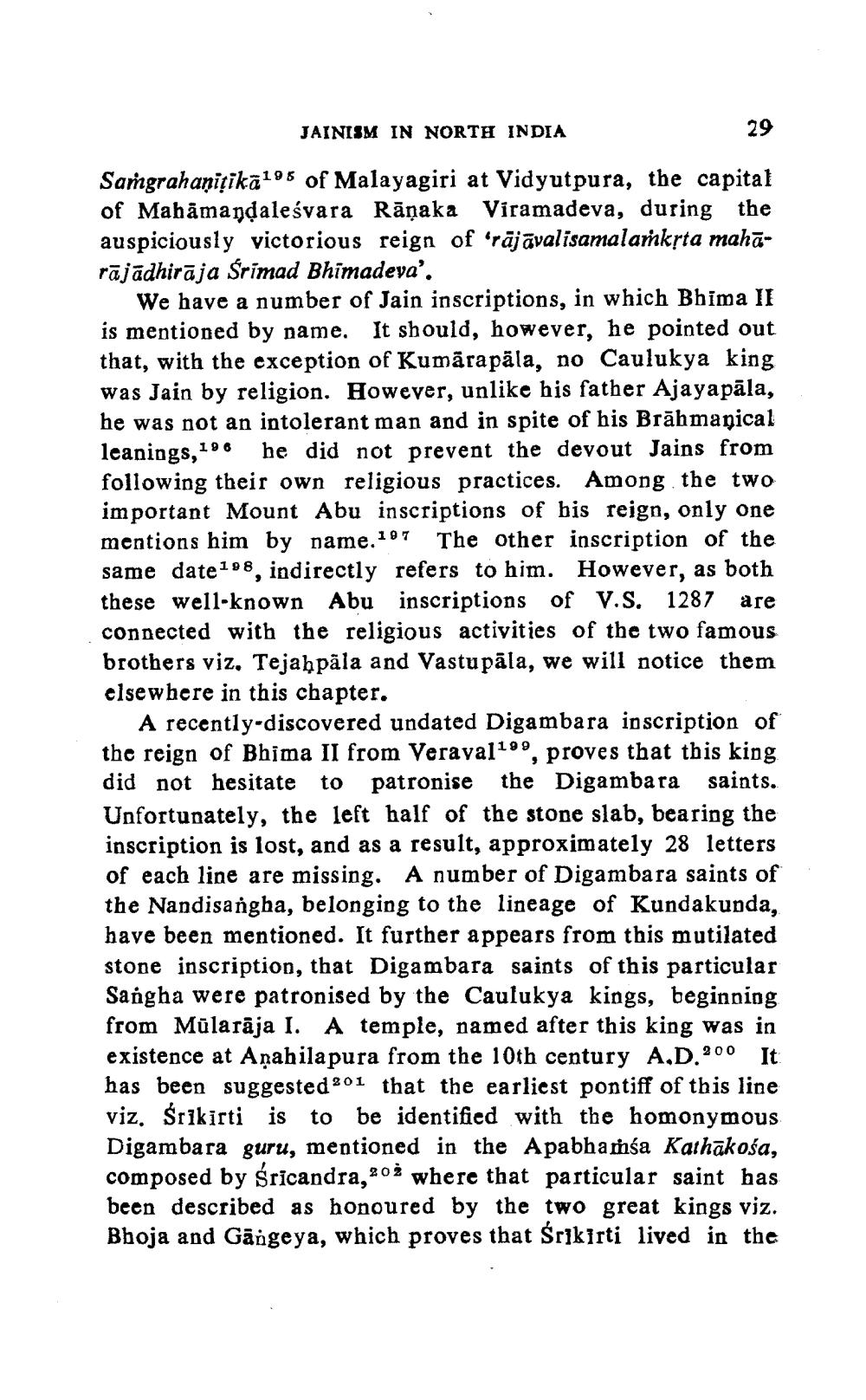________________
JAINISM IN NORTH INDIA
29
Sangrahaniţika105 of Malayagiri at Vidyutpura, the capital of Mahamandalesvara Rāņaka Viramadeva, during the auspiciously victorious reign of 'rājāvalisamalarkyta mahārājādhirāja Srimad Bhimadeva'.
We have a number of Jain inscriptions, in which Bhima II is mentioned by name. It should, however, he pointed out that, with the exception of Kumārapāla, no Caulukya king was Jain by religion. However, unlike his father Ajayapāla, he was not an intolerant man and in spite of his Brāhmaṇical leanings, 106 he did not prevent the devout Jains from following their own religious practices. Among the two important Mount Abu inscriptions of bis reign, only one mentions him by name.107 The other inscription of the same date198, indirectly refers to him. However, as both these well-known Abu inscriptions of V.S. 1287 are connected with the religious activities of the two famous brothers viz, Tejahpāla and Vastupāla, we will notice them elsewhere in this chapter.
A recently-discovered undated Digambara inscription of the reign of Bhima II from Veravallo, proves that this king did not hesitate to patronise the Digambara saints. Unfortunately, the left half of the stone slab, bearing the inscription is lost, and as a result, approximately 28 letters of each line are missing. A number of Digambara saints of the Nandisangha, belonging to the lineage of Kundakunda, have been mentioned. It further appears from this mutilated stone inscription, that Digambara saints of this particular Sangha were patronised by the Caulukya kings, beginning from Mülarāja I. A temple, named after this king was in existence at Anabila pura from the 10th century A.D.200 It has been suggested 301 that the earliest pontiff of this line viz. Śrikīrti is to be identified with the homonymous Digambara guru, mentioned in the Apabhamsa Kathakośa, composed by Śrīcandra, 202 where that particular saint has been described as honoured by the two great kings viz. Bhoja and Gängeya, which proves that Śr]kirti lived in the




